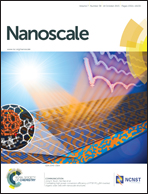Tumor pHe-triggered charge-reversal and redox-responsive nanoparticles for docetaxel delivery in hepatocellular carcinoma treatment†
Abstract
The insufficient cellular uptake of nanocarriers and their slow drug release have become major obstacles for achieving satisfactory anticancer outcomes in nano-medicine therapy. Because of the slightly acidic extracellular environment (pHe ≈ 6.5) and a higher glutathione (GSH) concentration (approximately 10 mM) in tumor tissue/cells, we firstly designed a novel D-α-tocopheryl polyethylene glycol 1000-poly(β-amino ester) block copolymer containing disulfide linkages (TPSS). TPSS nanoparticles (NPs) with pH- and redox-sensitive behaviors were developed for on-demand delivery of docetaxel (DTX) in hepatocellular carcinoma. DTX/TPSS NPs exhibited sensitive surface charge reversal from −47.6 ± 2.5 mV to +22.5 ± 3.2 mV when the pH decreased from 7.4 to 6.5, to simulate the pHe. Meanwhile, anabatic drug release of DTX/TPSS NPs was observed in PBS buffer (pH 6.5, 10 mM GSH). Due to the synergism between the pHe-triggered charge reversal and the redox-triggered drug release, enhanced drug uptake and anticancer efficacy were observed in HepG2 and SMMC 7721 cells treated with DTX/TPSS NPs. The positively charged NPs exhibited a stronger inhibitory effect on cell proliferation, promoted cell cycle arrest in the G2/M phase, and increased the rate of apoptosis. More importantly, based on the higher tumor accumulation of TPSS vehicles in vivo, a significant suppression of tumor growth, but without side-effects, was observed when DTX/TPSS NPs were injected intravenously into HepG2 xenograft tumor-bearing mice. Collectively, these results demonstrate that the newly developed dual-functional TPSS copolymer may be utilized as a drug delivery system for anticancer therapy.


 Please wait while we load your content...
Please wait while we load your content...